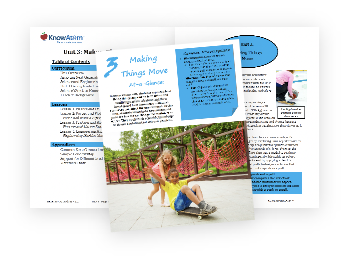
Science Lesson

|
State

|
Standards

|
State ID

|
Grades

|
Performance Expectation

|
|---|---|---|---|---|---|
| Living and Nonliving Things | MA | MA STE Frameworks | 1-LS3-1 | [{id=111674358580, createdAt=1681899818338, updatedAt=1681899820544, 1='{type=string, value=1}'}] 1 |
Use information from observations (first-hand and from media) to identify similarities and differences among individual plants or animals of the same kind. |
| Parent and Offspring Behaviors | MA | MA STE Frameworks | 1-LS3-1 | [{id=111674358580, createdAt=1681899818338, updatedAt=1681899820544, 1='{type=string, value=1}'}] 1 |
Use information from observations (first-hand and from media) to identify similarities and differences among individual plants or animals of the same kind. |
| Making Sounds and Instruments | MA | MA STE Frameworks | 1-PS4-1 | [{id=111674358580, createdAt=1681899818338, updatedAt=1681899820544, 1='{type=string, value=1}'}] 1 |
Demonstrate that vibrating materials can make sound and that sound can make materials vibrate. |
| Sounds and Senses | MA | MA STE Frameworks | 1-PS4-1 | [{id=111674358580, createdAt=1681899818338, updatedAt=1681899820544, 1='{type=string, value=1}'}] 1 | Demonstrate that vibrating materials can make sound and that sound can make materials vibrate. |
| Engineering Communication Devices | MA | MA STE Frameworks | 1-PS4-1 | [{id=111674358580, createdAt=1681899818338, updatedAt=1681899820544, 1='{type=string, value=1}'}] 1 | Use tools and materials to design and build a device that uses light or sound to send a signal over a distance. |
| Light | MA | MA STE Frameworks | 1-PS4-3 | [{id=111674358580, createdAt=1681899818338, updatedAt=1681899820544, 1='{type=string, value=1}'}] 1 |
Conduct an investigation to determine the effect of placing materials that allow light to pass through them, allow only some light through them, block all the light, or redirect light when put in the path of a beam of light. |
| Materials and Light | MA | MA STE Frameworks | 1-PS4-3 | [{id=111674358580, createdAt=1681899818338, updatedAt=1681899820544, 1='{type=string, value=1}'}] 1 |
Conduct an investigation to determine the effect of placing materials that allow light to pass through them, allow only some light through them, block all the light, or redirect light when put in the path of a beam of light. |
| Controlling Erosion | MA | MA STE Frameworks | 2-ESS2-1 | [{id=111674358581, createdAt=1681899819948, updatedAt=1681899821915, 1='{type=string, value=2}'}] 2 |
Investigate and compare the effectiveness of multiple solutions designed to slow or prevent wind or water from changing the shape of the land. |
| Mapping Land and Water | MA | MA STE Frameworks | 2-ESS2-2 | [{id=111674358581, createdAt=1681899819948, updatedAt=1681899821915, 1='{type=string, value=2}'}] 2 |
Map the shapes and types of landforms and bodies of water in an area. |
| Water Flow | MA | MA STE Frameworks | 2-ESS2-3 | [{id=111674358581, createdAt=1681899819948, updatedAt=1681899821915, 1='{type=string, value=2}'}] 2 |
Use examples obtained from international sources to explain that water is found in the ocean, rivers and streams, lakes and ponds, and may be solid or liquid. |
Use information from observations (first-hand and from media) to identify similarities and differences among individual plants or animals of the same kind.
Use information from observations (first-hand and from media) to identify similarities and differences among individual plants or animals of the same kind.
Demonstrate that vibrating materials can make sound and that sound can make materials vibrate.
Conduct an investigation to determine the effect of placing materials that allow light to pass through them, allow only some light through them, block all the light, or redirect light when put in the path of a beam of light.
Conduct an investigation to determine the effect of placing materials that allow light to pass through them, allow only some light through them, block all the light, or redirect light when put in the path of a beam of light.
Investigate and compare the effectiveness of multiple solutions designed to slow or prevent wind or water from changing the shape of the land.
Map the shapes and types of landforms and bodies of water in an area.
Use examples obtained from international sources to explain that water is found in the ocean, rivers and streams, lakes and ponds, and may be solid or liquid.
Standards citation: NGSS Lead States. 2013. Next Generation Science Standards: For States, By States. Washington, DC: The National Academies Press. Neither WestEd nor the lead states and partners that developed the Next Generation Science Standards were involved in the production of this product, and do not endorse it.
